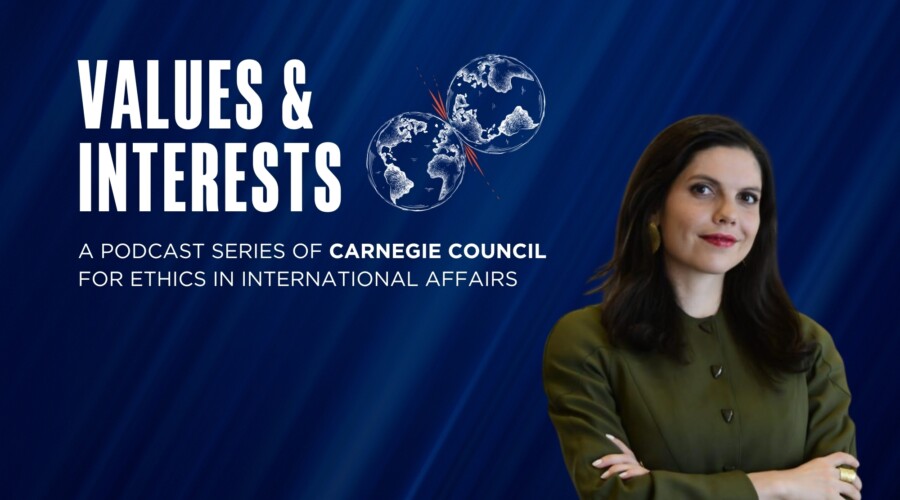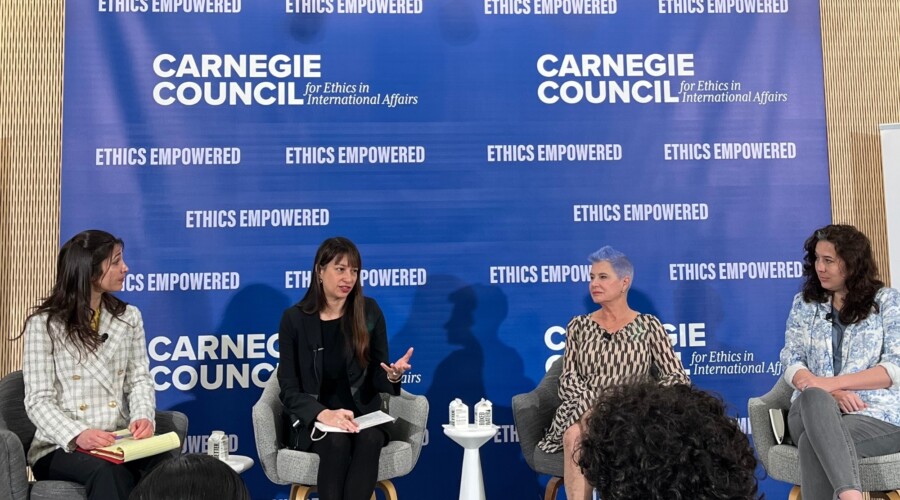Soo Hyun Kim, age 18, is currently a senior at St. Paul's School in New Hampshire, though she originally grew up in Seoul, South Korea. An avid debater and scientist, Soo Hyun hopes to engage in cross-cultural dialogue on science and technology's far-reaching impact on modern society. Otherwise, Soo Hyun can be spotted shooting photos on her 35mm Pentax and trying new tricks on her skateboard (albeit not always successful).
ESSAY TOPIC: In your opinion, what is the greatest ethical challenge facing the world today?
In an age dominated by competitive materialism, we have designer shoes, designer handbags, and designer faces. South Korea, my native country, accounts for nearly one-fourth of the global market for plastic surgery, and advertisements of cosmetic surgery litter the walls of subway stations, shopping districts, and even Incheon airport. However, remaking ourselves as adults is one thing. Are we really ready for designer babies?
In 2017, the United States spent a whopping 518 million dollars on genetic research alone. Scientific advancements have dominated much of the 21st century, making it impossible to ignore the ethical implications of advancing genetic procedures. Though a multitude of ethical debates arise regarding the genetic technologies themselves, given how much the technology has already advanced, it is most practical to consider regulatory aspects of such advancements and their societal ramifications. Inevitably, without proper regulations, genetic engineering will result in dire new forms of societal discrimination. In order to establish a regulatory framework for genetic technologies, a multitude of ethical dilemmas must be resolved through international cooperation.
The first meeting in the United States for developing a regulatory framework for genetic modification was held in 1975 at the Asilomar Conference, which outlined voluntary guidelines for the emerging recombinant DNA technology. Shortly after, a slew of genetic advancements came about: in 1978, scientists helped Lesley and John Brown conceive Louise Brown, the first baby born through in vitro fertilization (IVF). In 1996, scientists successfully cloned Dolly the Sheep from an adult cell through a process of nuclear transfer. Just last year, the world's first three-parent-baby was born through the controversial mitochondrial replacement therapy, in which the nucleus from an egg with defective mitochondria is replaced with a healthy donor egg, which is then fertilized by sperm. Along the way, fears of "Frankenbabies" and ill-advised human cloning abounded, as individuals wondered how such futuristic technologies would manifest themselves down the road.
Economic Natural Selection
A predominant fear that many hold is the likely possibility that genetic technologies would become available exclusively for the rich. Healthcare disparity between the rich and the poor is already tangible when considering that life expectancies vary by as much as 20 years between affluent and poor areas within the U.S., according to a recent study by the University of Washington. Though it could be argued that costs tend to fall as technology and medicine become more widely available, one needs to look no further than one IVF procedure still costing $12,000 - $15,000 in the U.S. to say otherwise. Since medicine in principle should work towards achieving a betterment of health for all, the challenge lies in developing a regulatory framework that would expand availability to all socioeconomic class without exclusively benefiting the wealthy and powerful. Moreover, as developed nations generally enjoy a greater level of medical advancement and overall wealth, ethical consideration must be given to how continued advancement of these genetic procedures have the potential to accelerate global health inequality, further aggravating geopolitical power imbalances. Global health inequality is already at a critical state; according to the World Health Organization, the risk of a child dying before turning one was over six times higher in Africa than in Europe. The number of clinics and costs for genetic procedures vary dramatically between countries as well; for instance, in Austria, insurance covers two-thirds of IVF costs, and prices average $3600 per cycle—almost one-fifth of that in the U.S. Similar statistics apply for European countries where universal healthcare is guaranteed. The plurality of global healthcare structures pose a hindrance for drafting an internationally consented set of regulations, as the availability of such technologies, and hence the social ramifications, would vary for each nation.
A New Era of Eugenics?
Accordingly, many find alarming the possibility that genetic engineering could open doors for a new form of societal imbalance and discrimination against the unmodified. This fear is historically justified; we have witnessed the genocidal effects of Eugenics not only in countries abroad such as Japan, Sweden, and Nazi Germany but even in our own backyard. Peaking in the 1920s to 30s, the Eugenics movement in the United States promoted an elimination of "negative" traits on the basis of race, disability, promiscuity, and criminality.
A frightening parallel arises with genetic engineering. When the inherent biology of an individual can be altered, concerns arise as to whether certain people's lives can be engineered to be more valuable than others. A baby born on the autism spectrum is no less of a human being than a baby born without such a disorder. If genetic engineering were to have no limits, individuals without modifications may come to bear the burden of hearing society announce that their "undesirable traits" diminish their worth. In a nation that supposedly embraces individual differences, as indicated through efforts such as the Americans with Disabilities Act, how would people feel if certain traits were endorsed as “less than others"?
Yet, in the process of creating a regulatory framework to address these issues, another major ethical obstacle emerges: if regulations are to limit unnecessary modifications as an attempt to prevent social stratification, who will decide which procedures are necessary and which are not? For instance, a genetic procedure to strengthen one's immune system may not be “necessary" for the individual in the short term, but it is still a medical operation that may prolong life later on. Furthermore, ethical lines become blurred when society contends that certain wishes of a mother during IVF should be accepted over others. What warrants that her wish for her baby to not have phenylketonuria is permissible, while her wish for her child to have greater muscle strength is not?
Navigating a Globalized 21st Century
A prominent challenge in crafting regulations lies in that these genetic advancements now are part of a globalized world where technology travels. The inconsistency of each country's guidelines for dealing with genetic technology is shocking. Out of 192 countries, 133 nations were reported to lack any sort of regulation relating to genetic modification technologies according to a 2009 UN report. Regarding germline genetic modification, in which altered traits can be passed down to future generations, most countries in Europe, as well as Canada and Australia have banned the procedure. On the other hand, countries such as China and India tend to have laxer policies concerning the technology, often lacking concrete statutes.
Undoubtedly, an international regulatory framework regarding genetic technologies is necessary now more than ever. However, a multitude of questions arise as to how we would ensure a democratic process to take place while establishing such a framework. With the vastly different stages of scientific development around the world, which countries should have a greater say in the process? Moreover, which culture's ethical system should be employed as the basis for crafting these regulations?
Bioethical standards tend to vary by country, with a multitude of national intricacies affecting how each community outlines what is moral and what is not. For instance, China's economic situation and one-child policy that persisted until 2015 are posited to have resulted in genetically healthy babies becoming an especially attractive option, leading to China's relatively approving attitude toward genetic modification in comparison to many Western countries. An international regulatory framework could become an example of a choice between cultural relativism and ethical imperialism: can outside communities truly judge another culture's customs without taking into context their disparate history, traditions, and ethical systems?
Furthermore, standards for what is deemed safe in each country tend to diverge as well. Consider genetically modified organisms (GMOs)—in the United States, the FDA has fully approved GMO foods as posing no risk for human consumption. In contrast, many African nations and countries in the European Union continue to ban the cultivation of GMOs, as their safety is not considered adequately tested. Similarly, in 2015, the United Kingdom became the first and only nation to legalize mitochondrial replacement therapy, whereas no other country to date has explicitly legalized the operation due to concerns regarding its lack of testing for safety.
With these ethical considerations in mind, the need for international discussion and consensus on such regulations is clear. Dialogue must be organized through the United Nations to incorporate as many countries as possible, and strict governmental adherence is required on a global scale. Because countries have already achieved varying levels of technological advancement, the insight of scientists holding the most current knowledge is imperative for proper discussion. Most importantly, in order to limit issues of power imbalance, it is necessary not only to share information amongst all nations regarding already established genetic procedures, but also to individually consider the technology's long-term ramifications in developing and developed countries. Though it may be tempting to advance this new technology as far as we can, we must realize that genetic engineering may come at significant societal costs that may not be fully recognized until it is too late. We don't want another Eugenics movement on our hands—especially not one based on genes that can be purchased.
To access the other winning essays, click here.
Bibliography / Works Consulted
*in order that they were mentioned
“NHGRI FY 2018 Congressional Justification." National Human Genome Research Institute (NHGRI.
Berg, Paul. "Meetings That Changed the World: Asilomar 1975: DNA Modification Secured." Nature News, Nature Publishing Group, 17 Sept. 2008.
Kamel, Remah Ma. "Assisted Reproductive Technology after the Birth of Louise Brown." Gynecology & Obstetrics, vol. 03, no. 03, 2013.
Scutti, Susan. “First Baby Girl Born Using Controversial IVF Technique." CNN, Cable News Network, 18 Jan. 2017
Luscombe, Richard. “Life Expectancy Gap between Rich and Poor US Regions Is 'More than 20 Years'." The Guardian, Guardian News and Media, 8 May 2017.
Employee. “IVF Costs - In Vitro Fertilization Costs." IHR.com - IVF Costs, In Vitro Fertilization Costs, Invitro Fertilization Costs.
“Infant Mortality." World Health Organization, World Health Organization.
“Fertility Treatment: Global Trends." Nordfertility Clinic.
Kobi. “Home." IVF-Worldwide.com Is the Largest and Most Comprehensive IVF Unit Directory in the World - IVF-Worldwide.
"Eugenics." New Dictionary of the History of Ideas, Encyclopedia.com.
“Unwanted Sterilization and Eugenics Programs in the United States." PBS, Public Broadcasting Service.
Ardekani, Ali M. “Genetic Technologies and Ethics." Journal of Medical Ethics and History of Medicine 2 (2009).
Schaefer, G Owen, and National University of Singapore. “Future - China May Be the Future of Genetic Enhancement." BBC, BBC, 8 Aug. 2016.
Macer, Darryl R. J., and Baoqi Su. “Chinese People's Attitudes Towards Genetic Diseases and Children with Handicaps." Law and Human Genome Review, vol. 18, 2003, pp. 191–210.
Brown, Kristen V. “Do We Need an International Body to Regulate Genetic Engineering?" Gizmodo, Gizmodo.com, 18 Jan. 2017.
Palacios-González, César, and María de Jesús Medina-Arellano. “Mitochondrial Replacement Techniques and Mexico's Rule of Law: On the Legality of the First Maternal Spindle Transfer Case." Journal of Law and the Biosciences 4.1 (2017): 50–69.



